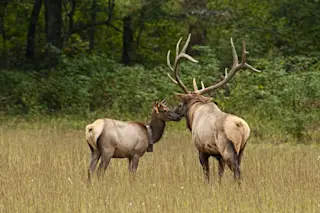Just east of Yellowstone National Park, snowcapped mountains rise sharply on either side of the narrow road to Cody, Wyo. This lush valley gets its name, Wapiti, from the Shawnee and Cree word for elk. Herds of these majestic animals spend sunny days grazing the basin’s greenery and drinking from the glinting waters of the Shoshone River. Teddy Roosevelt called this stretch of Wyoming’s North Fork Highway “the most scenic 50 miles in the world.”
Arthur Middleton observes a recently collared wolf. Doug McWhirter
“Not so much in the winter,” says Arthur Middleton, a biologist who has logged hundreds of hours in the blistering cold north of the Wapiti Valley in recent years, trying to explain the region’s mysterious elk decline. His team fits the swift and unwieldy beasts with GPS collars to track their movements in the vast expanse of the Greater Yellowstone area. Doing so requires hitting the ...














